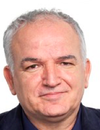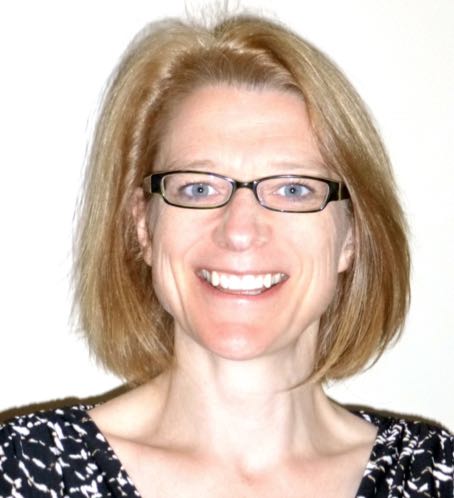Co-Located Conference AgendasLab-on-a-Chip & Microfluidics 2019: Companies, Emerging Technologies & Commercialization Track "B" | Lab-on-a-Chip & Microfluidics 2019: Emerging Themes, Technologies and Applications Track "A" | Microfluidics & Flow Chemistry 2019 | Point-of-Care Diagnostics, Global Health & Biosensors 2019 | Single Cell Analysis Summit 2019 | 

Monday, 7 October 201913:00 | Conference Registration and Conference Materials Pick-Up | |
Session Title: Opening Plenary Session -- Emerging Themes and Trends in Microfluidics and Lab-on-a-Chip, circa 2019 |
| | |
Plenary Session Venue: Coronado Ballrooms C & D |
| | 13:40 |  | Conference Chair Conference Chaipersons Opening Remarks and Welcome to the Attendees
Leanna Levine, Founder & CEO, ALine, Inc., United States of America
|
| 13:50 |  | Conference Chair Conference Chaiperson Opening Remarks and Welcome to the Attendees
Amy Adelberger, Founder and CEO, Global Impact Advisors, United States of America
|
| 14:00 |  | Keynote Presentation Microfluidic Methods for Single-Cell Manipulation and -Omics Analyses
Aaron Wheeler, Canada Research Chair of Bioanalytical Chemistry, University of Toronto, Canada
|
| 14:30 |  | Keynote Presentation Polymer-based Nanosensors for Single-Molecule Sequencing
Steve Soper, Foundation Distinguished Professor, Director, Center of BioModular Multi-Scale System for Precision Medicine, The University of Kansas, United States of America
We are generating a single-molecule DNA/RNA sequencing platform that can
acquire sequencing information with high accuracy (>95%) at
unprecedented throughputs (106 bases s-1). The technology employs high
density arrays of nanosensors that read the identity of individual
mononucleotides from their characteristic flight-time through a
2-dimensional (2D) nanochannel (~50 nm in width and depth; >10 µm in
length) fabricated in a thermoplastic via nanoimprint lithography (NIL).
The mononucleotides are generated from an intact DNA fragment using a
highly processive exonuclease, which is covalently anchored to a plastic
solid support contained within a bioreactor that sequentially feeds
mononucleotides into the 2D nanochannel. The identity of the
mononucleotides is deduced from a molecular-dependent flight-time
through the 2D nanochannel. The flight time is read in a label-free
fashion by measuring current transients (i.e., resistive pulse sensing)
induced by a single mononucleotide when it travels through a
constriction with molecular dimensions (<5 nm in effective diameter)
poised at the input/output ends of the flight tube. In this
presentation, our efforts on building these nanosensors using NIL in
thermoplastics will be discussed and the detection of single molecules
using electrical transduction with their identity deduced from the
associated flight time provided. Also, surface modifications of
thermoplastics for the immobilization of biologics, such as
exonucleases, will be discussed as well as the activity of biological
enzymes when immobilized to a plastic support. Finally, information on
the manipulation of single DNA molecules using nanofluidic circuits will
be presented that takes advantage of forming unique nanoscale features
to shape electric fields for DNA manipulation and serves as the
operational basis of the nanosensing platform. |
| 15:00 |  | Keynote Presentation Approaches to Wearable Microfluidic Sensor Devices for Well-Being and Personalized Healthcare
Martyn Boutelle, Professor of Biomedical Sensors Engineering, Imperial College London, United Kingdom
A new generation of portable, wearable biomedical devices is becoming
possible through recent advances in microfluidic technologies,
microelectronics, sensors and biosensors. Key to this integration is the
phenomenal growth in mobile computing power provided by current tablets
and mobile phones. Through miniaturization and carefully engineered
smart designs we can embed computer control and analytical best practice
into portable even wearable devices that are able to compensate for
shortcomings such as falling performance. These hybrid microfluidic
systems appear to their target users as simple stable systems that tell
them what they want to know. My group specializes in designing and
building such microfluidic systems to meet the needs of acute critical
care medicine. Key molecular markers are measured using both optical and
electrochemical sensors and biosensors. We then work with clinical care
teams to show proof of concept of the real-time continuous chemical
information that microfluidic systems can produce. Our ultimate goal is
that such systems can be used to monitor patients and guide therapy in a
patient-specific, personalized way. |
| 15:30 | Coffee Break and Networking | 16:15 |  | Keynote Presentation Rapid Diagnostics of Antibiotic Resistance
Rustem Ismagilov, Ethel Wilson Bowles and Robert Bowles Professor of Chemistry and Chemical Engineering, California Institute of Technology, United States of America
Rapid antibiotic susceptibility testing (AST) is critical for determining appropriate treatments and for enabling global antibiotic stewardship. Phenotypic AST is the gold standard, but these tests are unacceptably slow, requiring pre-culture steps. Genotypic AST methods are not sufficiently general to replace the gold standard (especially in Gram-negative organisms). Our lab uses microfluidic digital single-molecule counting of pathogen-specific RNA and DNA to perform phenotypic AST directly from clinical samples in as fast as 30 min. Further, we have demonstrated refinements of this approach that can enable rapid AST in high-priority organisms such as Neisseria gonorrhoeae and Carbapenem-resistant Enterobacteriaceae (CRE). |
| 16:45 |  | Keynote Presentation Optical and Electrical Single Molecule Analysis With Nanopore Optofluidic Devices
Holger Schmidt, Narinder Kapany Professor of Electrical Engineering, University of California-Santa Cruz, United States of America
In recent years, single molecule analysis has gained increasing importance for next-generation medical diagnostics. Among the leading approaches are optical fluorescence detection and electrical analysis of ionic current across nanopores. I will discuss an integrated platform that can combine both approaches in a single chip. Design and applications of these electro-optofluidic chips will be discussed. These include multiplex detection of multiple molecular biomarkers, dual-mode detection of single viruses, and feedback controlled gating of a nanopore for on-demand delivery and selection of biomolecules for chip-based analysis. The advanced level of electrical, optical, and fluidic integration is ideal for point-of-care applications. |
| 17:15 |  | Keynote Presentation The Difficult First Step for POC Diagnostics
Paul Yager, Professor, Department of Bioengineering, University of Washington, United States of America
A diagnostic process, no matter how long, begins with a first step. Whether to guide treatment of an individual’s infection, or to control the outbreak of a pandemic, there is an urgent need for low-cost rapid diagnostic devices capable of identifying the cause of infectious disease that work wherever the person is, not just in a centralized laboratory. “Ubiquitous diagnostics” can bring the best diagnostic capabilities to homes, physicians’ office laboratories and pharmacies in the developed world, or to places in the developing world where nothing is available now. However, the greatest challenge is often not detection of the analyte(s), but the preparation for the sample for that detection process. Samples differ in volumes, the concentration of the analyte, and the presence of components that can interfere with analyte detection. We have been working to develop simple devices for nucleic acid amplification tests (NAATs) for the presence of Chlamydia and gonorrhea, Mycobacterium tuberculosis and HIV. To enable them we have created a suite of stand-alone or integrated sample-handling components that can process blood, urine or swabs from different cavities in the body: the goal in all cases is to create a few microliters of a fluid that is both concentrated and “clean” enough that it can be introduced automatically into a sensitive NAAT device of our own design. We will show recent progress in reducing such processes to a few user-friendly steps appropriate for untrained users. |
| 17:45 |  | Keynote Presentation Cell-based Point-of-Care Oncology Tool (POCOT) For Precision Medicine
John McDevitt, Chair, Department Biomaterials, New York University College of Dentistry Bioengineering Institute, United States of America
The U.S. health care spending in 2016 reached $3.3 trillion or $10,348 per person. Health spending now accounts for 17.9% the US Gross Domestic Product. Chronic diseases like cardiac and cancer account for the majority of the costs in this area. Further, contributing to the $2.8B total costs for each new pharmaceutical is the cumbersome decade long approval process. These somber statistics seem to be offset by the promise of cutting edge biomarker developments with 157,000 biomarker papers published in last decade, yet only ~1 biomarker per year gets approved by the FDA. Likewise, the true potential for precision medicine is tampered by an infrastructure and incentive structure that slows the arrival of the benefits of precision medicine. To overcome these limitations, transformative new tools are desperately needed to enable a new era of medicine through research, technology, and policies that empower patients, researchers, and providers to work together toward development of individualized treatment. This talk features the development, optimization and validation of the first cell-based point-of-care oncology tool (POCOT) for precision medicine. Using single-cell data collected non-invasively from cytology samples of prospectively recruited patients with gold-standard-confirmed diagnoses, a series of predictive models were developed and validated resulting in a “continuous numerical risk score”. Model development consisted of: (1) training binary classification models for each diagnostic class pair, (2) pairwise coupling to obtain diagnostic class probabilities, and (3) a weighted aggregation to obtain a final risk score on a continuous scale. Diagnostic accuracy based on optimized cutpoints for the validation dataset ranged from 76% for Benign lesions, to 82.4% for Dysplastic, 89.6% for Malignant, and 97.6% for Normal controls. The weighted aggregation of pairwise probabilities into a continuous variable was associated with a minor decrease of 6.4% for overall accuracy and demonstrated a strong positive relationship with diagnostic severity (Pearson’s coefficient = 0.805 for validation dataset). Frequencies of 5 cellular phenotypes recorded for 3 different ranges of the numeric index score agreed with common trends observed in conventional cytopathology. Finally, a simulation demonstrated that the numeric index can respond to changes in as few as 1% of the cells within a cytology sample, which is a necessary requirement for future evaluations of its utility for lesion monitoring. The first cell-based point-of-care oncology tool for precision medicine is demonstared in the context of a continuous numeric index for potentially malignant oral disorders. These efforts result in a sensitive, accurate, and non-invasive method for enabling monitoring of these lesions. Continuous quantitative severity indices devoid of human subjectivity and categorization bias could have significant implications in a variety of medical decision making situations where microscopic evaluations and grading of biopsy samples by pathologists currently determine diagnostic, prognostic and treatment decisions. As such, this numeric index has the potential to monitor disease progression, recurrence, and the need for therapeutic intervention. |
| 18:15 |  | Keynote Presentation Enzyme-based Bioelectronic Wearable Sensing Devices
Joseph Wang, Chair of Nanoengineering, SAIC Endowed Professor, Director at Center of Wearable Sensors, University of California-San Diego, United States of America
Wearable bioelectronic devices rely on oxidoreductase enzymes and have already demonstrated considerable promise for on-body applications ranging from highly selective non-invasive biomarker monitoring to epidermal energy harvesting. Critical to such progress is the judicious design of the enzyme-electronic interface, along with flexible platforms with mechanical properties similar to those of biological tissues. Such devices require special attention to the enzyme-electronic interface and to several considerations related to wearable applications, such as mechanical properties (flexibility and stretchability), operational stability in different biofluids and under changing conditions (e.g., pH, temperature), biofouling, selectivity, and low target concentrations. Keeping these requirements in mind, our group has pioneered a variety of wearable biocatalytic sensors and biofuel cells devices. By leveraging the advantages of biocatalysis, electrochemistry, and flexible electronics, and addressing key challenges, wearable bioelectronic devices could have a tremendous impact on diverse biomedical, fitness and defense fields. |
| 18:45 | Networking Dinner in the Exhibit Hall with Beer and Wine. Meet the Exhibitors and Network with Colleagues | 20:00 | Close of Day 1 of the Conference |
Tuesday, 8 October 201908:00 | Conference Registration, Materials Pick-Up, Morning Coffee and Pastries in the Exhibit Hall | |
Session Title: Emerging Technologies and Applications in the Point-of-Care Diagnostics Space |
| | |
Venue: Coronado Ballroom D |
| | 09:00 |  | Keynote Presentation Paper-based Nanobiosensors: Diagnostics Going Simple
Arben Merkoçi, ICREA Professor and Director of the Nanobioelectronics & Biosensors Group, Institut Català de Nanociencia i Nanotecnologia (ICN2), Barcelona Institute of Science and Technology (BIST), Spain
Biosensors field is progressing rapidly and the demand for cost efficient platforms is the key factor for their success. Physical, chemical and mechanical properties of cellulose in both micro and nanofiber-based networks combined with their abundance in nature or easy to prepare and control procedures are making these materials of great interest while looking for cost-efficient and green alternatives for device production technologies. Both paper and nanopaper-based biosensors are emerging as a new class of devices with the objective to fulfil the “World Health Organization” requisites to be ASSURED: affordable, sensitive, specific, user-friendly, rapid and robust, equipment free and deliverable to end-users. How to design simple paper-based biosensor architectures? How to tune their analytical performance upon demand? How one can ‘marriage’ nanomaterials such as metallic nanoparticles, quantum dots and even graphene with paper and what is the benefit? How we can make these devices more robust, sensitive and with multiplexing capabilities? Can we bring these low cost and efficient devices to places with low resources, extreme conditions or even at our homes? Which are the perspectives to link these simple platforms and detection technologies with mobile phone communication? I will try to give responses to these questions through various interesting applications related to protein, DNA and even contaminants detection all of extreme importance for diagnostics, environment control, safety and security. |
| 09:30 |  | Keynote Presentation The Challenges of Using Innovative Technologies to Provide High-Quality Cancer Diagnoses in Low-Resource Settings
Jane Brock, Chief of Breast Pathology, Brigham and Women’s Hospital, Harvard Medical School, United States of America
|
| 10:00 |  | Keynote Presentation Multiplex Detection of Sepsis Biomarkers Enabled by Closed Bipolar Electrochemistry with Optical Readout
Paul Bohn, Arthur J. Schmitt Professor of Chemical and Biomolecular Engineering and Professor of Chemistry and Biochemistry, University of Notre Dame, United States of America
Sepsis syndrome affects close to 1,000,000 patients annually in the US alone. Of these ca. 30%, predominantly from the pediatric and geriatric populations, do not survive. In current practice, diagnosis is carried out using symptomatic indicators, which is problematic given the similarity of the symptoms to those of patients with influenza. What is needed is a rapid and accurate test that can distinguish where a patient is along the sepsis continuum, starting with systemic inflammatory response syndrome and ending at severe septic shock. We are developing microfluidically-enabled multiplex sensors capable of simultaneously discerning the presence and level of multiple biochemical markers of sepsis syndrome. The sensor relies on a unique assay, in which an electrochemical detection reaction is amplified by redox cycling in an analytical cell. This, in turn, is coupled to a complementary redox-cycled optical readout reaction in a separate reporter cell. Significant flexibility in design means that the readout can be tuned to the desired concentration range of the analyte, colorimetric readout for relatively high level metabolites, e.g. lactate, metal-deposition shifts in optical transmission of metamaterials for higher sensitivity, and fluorigenic reactions where maximum sensitivity is required, e.g. cytokines. |
| 10:30 | Morning Coffee Break and Networking in the Exhibit Hall | 11:15 | Harnessing Evaporation-Driven Capillary Flow For Point-of-Care Diagnostics
Andres Martinez, Professor, California Polytechnic State University, United States of America
Paper-based microfluidic devices, also known as microPADs, offer a promising platform for the development of point-of-care assays for use in remote, resource-limited settings. Like conventional microfluidic devices, microPADs can be used to manipulate and analyze small volumes of fluids. Paper-based devices are also inexpensive to fabricate, portable, simple to operate, and can complete an assay without relying on electrical power or supporting equipment. MicroPADs typically wick fluids by capillary action, which provides a convenient mode of moving fluids through the device. This presentation will describe evaporation-driven capillary flow as a complementary approach for moving fluids through paper-based devices and the application of this approach toward automating multi-step assays that require a timed sequence of events. | 11:45 |  | Keynote Presentation Low Cost Diagnostics For Global Health – Improving R&D Processes, Manufacturability, and Assay Performance
Bernhard Weigl, Director, Center for In-Vitro Diagnostics, Intellectual Ventures/Global Good-Bill Gates Venture Fund, United States of America
At Global Good we focus on in-vitro diagnostics for low resource settings and develop ultra-high sensitivity lateral flow assays, phage-based rapid bacteria viability assays, disposable cartridge highly multiplexed NAAT assays, and simple very low cost medium sensitivity nucleic acid assays, and low cost highly multiplexed digital formats. For our lateral flow assay work we have developed a high throughput array-based empirical optimization system for lateral flow assays that speeds up R&D and results in better performing assays. We will demonstrate the results of this new optimization approach for two new malaria lateral flow assays. We will also provide an overview over new assay R&D in the tuberculosis field on NAAT, phage, and digital platforms. |
| 12:15 |  | Keynote Presentation Point of Care Infectious Disease Diagnosis
Angelika Niemz, Professor, Keck Graduate Institute, United States of America
We are developing a rapid, affordable, and easy to use minimally instrumented nucleic acid testing system for point of care infectious disease diagnosis. This platform technology is designed to detect viruses or bacteria from blood, urine, or swab samples through integrated sample preparation, isothermal nucleic acid amplification, and lateral flow detection. |
| 12:45 | Networking Lunch in the Exhibit Hall, Exhibits and Poster Viewing | |
Session Title: New Developments in Point-of-Care Diagnostics, circa 2019 |
| | 14:00 |  | Keynote Presentation A New Lab-on-a-Chip (LOC) Platform with On-Chip Reservoirs of Liquid Reagents for POCT Applications
Chong Ahn, Distinguished University Research Professor, Mitchell P. Kartalia Chair Professor of BioMEMS, University of Cincinnati, United States of America
A new lab-on-a-chip (LOC) platform with on-chip liquid reservoirs holding all reagents for high-sensitive immunoassay has been designed, developed and characterized for Tumor Necrosis Factor - alpha (TNF-alpha), a protein biomarker that is caused by lung inflammations or cancers. The designed LOC device is composed of four reservoirs for sample, enzyme conjugated detection antibody, wash buffer and chemiluminescence substrate in liquid form, along with spiral reacting microchannels coated with capture antibody. All reservoirs and spiral microchannels were connected in series and designed to perform sequential delivery of immunoassay reagents with minimal user intervention. The developed LOC measured TNF-a concentration as low as 16 pg/mL in plasma sample from rats and also had a limit of detection (LOD) of 0.5 pg/mL in spiked artificial plasma. The detected range of TNF-a is low enough to diagnose early responses to lung inflammation or cancers in humans. In addition, the analysis time was drastically reduced, to about 30 minutes as opposed to hours in conventional assay methods. Successful implementation of a high-sensitive, chemiluminescence based immunoassay on a pre-loaded LOC, as reported in this work, can pave the way towards developing a new POCT testing platform. |
| 14:30 |  Assay Translation – The Path To Successful Integration Into a Microfluidic System Assay Translation – The Path To Successful Integration Into a Microfluidic System
Ken Rusterholz, Product Specialist Team Lead, Minifab Ltd.
Diagnostic integration within disposable devices continues to show rapid market growth. As these emerging assay and biomarker measurement technologies become increasingly complex, updated approaches are required to overcome integration challenges when combining microfluidic and biological workflows. Key success factors include aligning the microfluidic design and manufacturing development with applicable assay characterization outputs. This presentation will review these trends, solutions, and how Minifab has expanded its bioscience and assay translation capabilities to support all stages of diagnostic and consumable development through manufacture.
| 15:00 | Development of an HIV-1 Viral Load POC Test
Jonathan D Posner, Professor of Mechanical Engineering & Chemical Engineering, University of Washington, United States of America
The HIV/AIDS epidemic continues to be a major global health challenge, and accurate, affordable HIV-1 viral load testing is increasingly needed at the point-of-care (POC). Nucleic acid amplification tests (NAATs) provide high diagnostic accuracy of infectious diseases, yet most systems are restricted to central laboratories due to assay and instrumentation complexity. Here we describe a paper membrane based NAAT with integrated sample preparation and amplification using isotachophoresis and recombinase polymerase amplification. This approach has the potential to reduce the cost and complexity of point-of-care (POC) NAATs. We demonstrate the detection of HIV-1 nucleic acids in whole blood. Preliminary data demonstrate linearity at low copy number which may provide valuable quantitative data on the HIV viral load of a patient. | 15:30 |  Come On Baby Light My Fire – Combining Photonics and Microfluidics For Point-of-Care Applications Come On Baby Light My Fire – Combining Photonics and Microfluidics For Point-of-Care Applications
Holger Becker, Chief Scientific Officer, Microfluidic ChipShop GmbH
Any diagnostic systems, involving microfluidics or other technologies, contain a detection module as a central system component. For many years, fluorescence has been the gold standard, both due to its sensitivity as well as versatility. In recent years however, alternative detection methods have been emerging which offer different approaches especially for microfluidic systems with applications in point-of-care diagnostics. In this presentation, we will focus on two approaches: a) the integration of silicon photonic devices (so-called PICs) which utilize the semiconductor fabrication methods for silicon but make use of the optical properties of silicon instead of its electronic functionalities and b) the use of ink-jet printed integrated photonic elements such as light-sources and detectors which can be directly integrated in a disposable microfluidic cartridge.
| 16:00 | Afternoon Coffee Break and Networking in the Exhibit Hall | 17:00 |  | Keynote Presentation Panel Discussion on POC Technologies and Global Health
Amy Adelberger, Founder and CEO, Global Impact Advisors, United States of America
Chairperson of Panel Discussion: Amy Adelberger
|
| 18:00 | Networking Reception in the Exhibit Hall with Beer, Wine and Appetizers -- Network with the Exhibitors and Engage with Speakers and Attendees | 19:00 | Close of Day 2 of the Conference |
Wednesday, 9 October 201908:00 | Morning Coffee, Pastries and Networking in the Exhibit Hall | |
Session Title: Late-Breaking Session on POC Diagnostics and Biosensors |
| | |
Venue: Coronado Ballroom D |
| | 08:30 | Revisiting the Point of Care – Changes to FDA Policies on CLIA Waivers and Opportunities in POCT
James Boiani, Partner, Epstein Becker & Green, P.C., United States of America
There have recently been substantial changes for the better in U.S. FDA’s approach to application of CLIA Waiver standards, reflected in new FDA guidance. Mr. Boiani – a seasoned life sciences attorney and the Founder and General Counsel of the Coalition for CLIA Waiver Reform – will offer his perspectives on FDA’s new approach, the history of its evolution and legal underpinnings, and the opportunities it creates for innovation in the U.S. market. He will cover key elements of new FDA guidance, including use of agreement studies, human factors evaluations, and dual marketing and CLIA waiver submissions, which could make for a more efficient and accepting regulatory environment. | 09:00 |  | Keynote Presentation Integrating Aptamer Technology with Paper-Based Point-of-Care Devices for Biomedical Monitoring
John Brennan, Professor and Director, Biointerfaces Institute, McMaster University, Canada
DNA aptamers and DNA enzymes (denoted as functional nucleic acids or FNA) are an emerging platform for development of point-of-care (POC) diagnostic devices. In this presentation, I will first focus on the development of new aptamers and DNA enzymes for a range of key biomarkers and their integration into colorimetric and fluorimetric assays for a variety of targets, mainly in the area of infectious disease. Methods to couple target-binding to FNAs to the production of a DNA strand as an output will then be described. The use the output DNA to directly initiate color production or produce isothermal amplification (ITA), will then be outlined. Finally, the integration of the FNA assays into flow-based paper devices will be described as platform for a range of new POC devices that allow facile detection of clinical analytes. Examples will be provided outlining paper-based devices for ultra-sensitive detection of E. coli, C. difficile, MRSA and H. pylori.
|
| 09:30 |  | Keynote Presentation CRISPR-Powered Transistors for DNA Biosensing
Kiana Aran, Assistant Professor, Keck Graduate Institute, HENRY E. RIGGS SCHOOL OF APPLIED LIFE SCIENCES, United States of America
The utility of nano-electronic systems to develop transformative and customizable biosensing platforms for pharmaceutical, clinical, and environmental applications will be discussed. More specifically this talk will focus on utilizing CRISPR-powered nanoelectronics in order to expand the applications of CRISPR/Cas for diagnostics and improved CRISPR-based therapeutics. |
| 10:00 | Coffee Break and Networking in the Exhibit Hall | 10:30 | Embracing Chaos – A Simplified Platform for Multiplexing Digital Assays in Polydisperse Droplets
Samantha Byrnes, Research Scientist, Intellectual Ventures Laboratory, United States of America
We describe a digital assay platform that uses a novel statistical framework applied to assays performed in polydisperse droplets. We have developed methods for digital culture, PCR, and immunoassays as well as a new technique for increasing multiplexing capabilities. | 11:00 | Reading the Immune System for Rapid Diagnosis of Acute Infection and Sepsis
David Rawling, Senior Principal Scientist, Inflammatix, Inc., United States of America
Inflammatix is changing how physicians diagnose and treat acute infections and sepsis by leveraging state-of-the-art bioinformatics, assay chemistry and an exclusive, patent-pending biomarker set.?Our initial focus is on development of host response-based diagnostic tests for detecting acute infections and sepsis. | 11:30 | Wearable and Point-of-Need Electrochemical Sensor Platforms with a Focus Towards Human Performance and Human Protection
Lee Hubble, Senior Research Scientist, Commonwealth Scientific and Industrial Research Organisation (CSIRO), Australia
Wearable sensors and point-of-need diagnostics are uniquely placed to bridge the technology gap for real-time chemical analytics, shifting the power of laboratory-based analyses directly to the in-field user. This talk will detail various electrochemical sensing and biosensing platforms we are developing that are centered around human performance and human protection application areas. This includes cross-reactive chemiresistor sensor arrays for disease screening and human alertness studies, through to electrochemical wearable sensors for detection of security and global health threats. | 12:00 | A High Aspect Ratio FinFET, A Compromise to Reach Efficient Electrochemical Sensing
Cesar Pascual García, Lead Research Scientist, Luxembourg Institute of Science and Technology, Luxembourg
Bio-sensing for early diagnostics and to facilitate clinical-decisions is a key-enabling technology for the implementation of next generation. In the last decades, several devices for molecular diagnostics based in the manipulation of genetic material (DNA, RNA…) have validated this concept. The next step is demanding tools for the detection of molecules beyond nucleotides. Field effect transistors (FETs) emerge as one of the candidates for label free sensing, in fact, nano-FETs have shown limits of detection in the femtomolar range. However no clinical applications are currently available. The first drawback is the balance between the optimisation for diffusion-limited processes and reliability, which has made that multiplexing for personalised medicines has low confidence levels and hampers mass production to lower the cost of Point of Care devices. The second limitation is the ionic screening in biological conditions. Many assays using label free sensing measure end-point assays after cleaning and using low ionic strength electrolytes. This decreases the relevance of the measurements and hinders the possibility to access the kinetic information of the molecular binding. We will present a new design of FET for label free sensing using a high aspect ratio FinFET that addresses appropriately all these questions. | 12:15 | A High Aspect Ratio Fin-Ion Sensitive Field Effect Transistor: Towards Improved Sensing Capabilities for Lab on a Chip Devices
Serena Rollo, Researcher, LIST, Luxembourg
The transduction of chemical signal using field effect transistors (FETs) is one of the candidate mechanisms for the development of label free sensing. Miniaturisation of the devices using 2D and 1D materials has been a successful strategy that has led to very low concentration limits. However, there are currently no clinical applications using label free FET sensing due to problems of reliability and low signal. We propose an alternative design based on a high aspect ratio FinFETs. Our FinFETs show higher total signal and improved linearity for the devices with higher aspect ratio. In addition, FinFETs promise the optimization of reliability and efficiency in terms of limits of detection, for which the interplay of the size and geometry of the sensor with the diffusion of the analytes plays a pivotal role. We developed fabrication processes for the production of these sensors using either high resolution electron beam lithography or large-throughput optical lithography combined with controlled plane dependent wet anisotropic etching of silicon. The fabrication method developed is fully CMOS compatible and ease integration within Lab on a Chip devices is foreseen. We will show our results of reliability on the production of these sensors and performances. | 12:30 | Lunch | 13:45 | Robotic Multimodal Electrophysiology for Neural Targeting in the Deep Brain
Barbara Smith, Assistant Professor, School of Biological and Health Systems Engineering, Arizona State University, United States of America
Christopher Miranda, Researcher, Arizona State University, United States of America
Studies of high resolution neuronal recordings are critically important to elucidate fundamental mechanisms that play a key role in developmental processes that result in human diseases such as cancer and neuro-degeneration. This insight has become possible through the advent of penetrating intracellular electrodes and whole cell patch clamps regarding the relationship of the single neuron to function of the greater neural network. Several barriers remain against the widespread application of patch clamp electrophysiology within in-vivo models, thus limiting the potential impact of this technology within the fields of neuroscience and electrophysiology. An effective translational technology with the ability to gain immediate insight into neuronal activity in the deep brain is therefore necessary for improving early-stage diagnosis, clinical treatments, and surgical procedures for devastating neurological disorders. Despite advances, current technologies for cellular targeting are limited by: the penetration depth of light and reliance on the technical expertise of the researcher, making it very difficult to study synaptic activity and the interconnected neural network in these regions. This presentation will introduce our recent work applying a fully integrated feedback system, first developed in our lab, to target, stimulate, and record cells of interest at depths beyond what is currently possible. The overarching goal is to translate technologies developed in the lab for improved research outcomes and fundamental knowledge gained. The ability to measure and stimulate selected cells is essential in order to gain immediate insight into cellular activity for the purpose of improving early-stage diagnosis, clinical treatments, and surgical procedures for devastating neurological disorders. |
|


 Add to Calendar ▼2019-10-07 00:00:002019-10-09 00:00:00Europe/LondonPoint-of-Care Diagnostics, Global Health and Biosensors 2019Point-of-Care Diagnostics, Global Health and Biosensors 2019 in Coronado Island, CaliforniaCoronado Island, CaliforniaSELECTBIOenquiries@selectbiosciences.com
Add to Calendar ▼2019-10-07 00:00:002019-10-09 00:00:00Europe/LondonPoint-of-Care Diagnostics, Global Health and Biosensors 2019Point-of-Care Diagnostics, Global Health and Biosensors 2019 in Coronado Island, CaliforniaCoronado Island, CaliforniaSELECTBIOenquiries@selectbiosciences.com